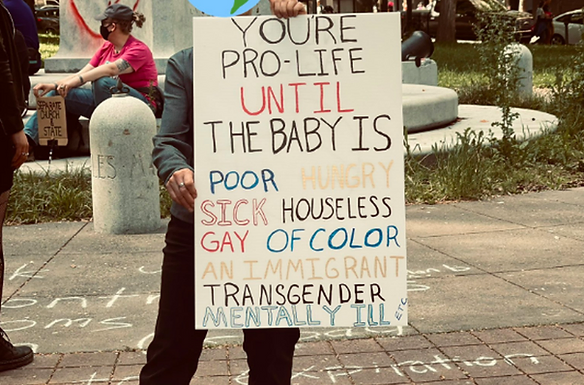
Should We Abolish Marriage?

We cannot deny the impact of religious beliefs in shaping the modern description of marriage, however, the foundation of the institution goes way back before any of the religions with current believers. In fact, the earliest evidence of a man and a woman uniting is nearly 4500 years old. (1) Of course, defining the concept of marriage as “uniting a man and a woman” is fairly inadequate in the year 2022. Since a total of 24 countries legalized same-sex marriage during the past 21 years, it would be more appropriate to define marriage as uniting the lives of two adults legally.
Prior to the 21st century, heteronormative monogamy was the only form of legal marriage globally, except for countries under Islamic rule that allow multiple wives in a marriage. The role of the women in the marriage has been drawn as caretaker and child-bearer, while the men were the breadwinner of the household. Until the second-wave feminism encouraged women to join the workforce on a global scale, hence being active members of the society, the only place women could exist was inside their houses or neighborhoods. In some parts of the world, it is frowned upon for a woman to have financial independence even today. Because being financially independent is the gateway to having bodily autonomy and living a life without the pressure or need of a husband. What society, how “civilized” or “developed” they might be, expects women to be is the object, not the subject. We may talk about traditions and “the way our parents were raised”, or we can point the finger at the actual reason for such societal pressure on reproduction: religions.
The mere focus of the theology should have been setting some rules for society to run in peace and harmony, instead, it has evolved into a control mechanism with a side dish of propagation. Instead of enforcing basic human decency, religious propaganda has been the main tool of forced reproduction and marriage. Marketing the creation of human life as “serving your God” might have been replaced with “serving your nation” due to the Nationalism and Eugenics of the 19th and early 20th centuries, however, the meaning of life has always been told through generations as “leaving a heritage.” Meaning, “no one will remember you if you do not have any children”, which is simply not true anymore thanks to advanced technology and social media. It would not be exaggerated if we were to say that as the human experience evolves, the need for reproducing declines. On top of that, due to women participating in the workforce more than ever now, they have less time to have a pregnancy and more money so they can just pursue their passions and enjoy their lives instead of complying with societal expectations.
It is not easy to summarize thousands of years of conditioning women to be the caretaker of the family to be fully accepted by the society, however, buying dolls and kitchenware toys for girls and encouraging them to dream mainly about their weddings in the future are the simplest examples of heteronormative society’s imprints. You may think, “we are in the fourth wave of feminism, girls are not forced to be shaped into future wives,” however, it simply is not true for a significant group of the world. There are still child brides being forced into marriage, there are still girls with no access to education, and there are still young and accomplished women expected to “give some grandchildren” to their parents to be seen as fully functioning adults in the world. Ignoring these would be denying the consequences of this oppressive culture. Since sex is the biggest taboo almost in every culture, sexual freedom –for anyone other than cishet men– seems like the most outrageous act of all time. With marriage and family being the center of society, this freedom is not very available at this moment. In order to progress as human civilization, we should be breaking down these traditions and creating spaces for anyone to express themselves and pursue their dreams.
The answer to the question “Should we abolish marriage?” may seem apparent in the first place as yes, but there are many logistic issues with that action. Let’s start with the couples who are already married. If the concept of marriage were to be abolished, what happens to the couples who are already married? Do the divorces in progress just disappear? What happens to the already signed prenups? There are many rights that marriage gives to the parties, such as receiving alimony after divorce or countries granting citizenship through marriage. What happens to those laws? If we were to abolish marriage to relieve oppressed groups from the pressure, we need to make sure that they do not lose any of their rights due to the abolishment of marriage.
Another issue is the societal expectation of women to get married. If marriage would not exist, what would society criticize a woman for the lack of? A (romantic) relationship and a family, perhaps. Without lifting the pressure of founding a family on women to be accepted as “complete” in society, removing the legal aspects would only strip them of their rights in and out of the relationship. When we look deeper into the rights provided by the marriage laws, we come across inheritance laws. Without the implementation of inheritance laws, the share for the daughters may get overlooked since it was not even considered to give a share from the inheritance to the daughter a century ago. Also, the adaptation system would need to be altered completely due to the absence of a legal marriage. To ensure both the safety and the rights of the children getting adopted, the process would be more strict and complicated.
When we talk about the altercations for the offspring of marriage, we need to address the access to birth control and abortion. Since there would be no legal bind for the non-pregnant partner to co-parent in the absence of marriage, both birth control and abortion should be accessible for everyone. As well as sexual education, we are to encourage romantic and sexual freedom for everyone –especially women– to have bodily autonomy. Scientific improvements and societal acceptance of men’s birth control need to progress more to create a safer space for everyone.
As we circle back to the religious aspect of abolishing marriage, we face the reality of people –especially old and traditional ones– abandoning their beliefs being near impossible. Therefore, we can clearly see that abolishing legal marriage would only cause the cultification of religious communities which would benefit no one let alone the groups we are trying to save from the oppression.
In conclusion, we should abolish marriage, however, we simply cannot do it. Until the pressure of reproduction and heteronormativity in society dissolves, we cannot get rid of the legal marriage as we know it currently. To progress towards a society with no need for legal marriage, the first step is global same-sex marriage laws. The second step is the establishment and enforcement of the laws protecting women, girls, and any non-cishet men members of the families from economic, psychological, and domestic abuse inside the households. Without ensuring every member of the society would have equal rights without needing the institution of marriage, abolishment of marriage would not benefit the people who are oppressed by traditional marriage practices.





